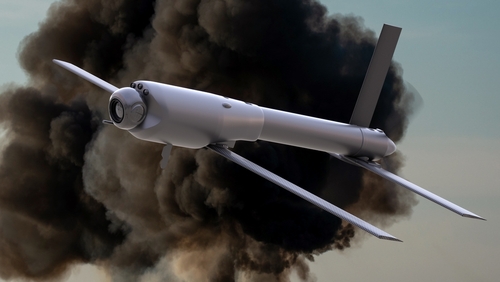
The Tehran Drones Used by Russia to Bomb Ukraine Are Produced by an Austrian Company That Ensures It Hasn’t Had Commercial Relations with Iran and hypothesizes the Theft Thesis, even in Italy.
The shortage of ammunition in the Russian army is now a matter of state and joins the even more significant lack of men and means to fuel the invasion of some areas of Ukraine, that is increasingly becoming cumbersome and suffering. To help Putin, in recent weeks, kamikaze drones have been provided by Iran and they have already caused serious civilian losses and the destruction of public buildings in some areas of Ukraine.
Despite a press release from the Iranian foreign ministry, in which the hypotheses of support for the Russian army by Tehran are denied, according to the Pentagon the rumors about an arsenal of drones in use by the Russians and coming from Iran are confirmed from the surveys carried out on the remains of the exploded devices.
All of Iran’s war production is constantly monitored by NATO and Israel, given its proximity to the Middle Eastern nation, and from the latest observations it seems evident that by now the number of missiles, rockets and drones is so high that it has exceeded that of the Jewish state who, despite remaining technologically better equipped, holds fewer weapons than the regime of Ali Khamenei. Israel’s concerns, therefore, are justified by the intensification of military production by the Iranian State that is too close, ideologically, to the Lebanese Hezbollah, the Shiite militias in Iraq, the Assad regime in Syria and the Houthis in Yemen.
The evolution of Iranian war supplies production has been controversial and ambiguous as it has seen a collaboration, in the past decades, precisely with Israel in the development of a common missile program which was interrupted, however, during the Islamic revolution and the clear stance against the Atlantic Part of the World. With the lack of spare parts and a constant maintenance, until then in collaboration with Western countries, Iran turned to a partnership with dictatorial and relatively isolated regimes, such as those of North Korea, Libya and the Syria, buying from them technical assistance and armaments, often Soviet, especially in the second half of the 1980s.
The collaboration with the Russians, therefore, seems to have much deeper roots and many are betting that in reality it has never stopped but, on the contrary, it has been reinvigorated with the conflict of recent months in Ukraine. In fact, in Ukraine, a lot of Iranian-made drones were used to hit strategic targets and sow the panic among civilians. The Iranian drone program, however, appears to be the oldest in the world, as advanced experiments on the first unmanned means of war were already carried out in the 1980s.
A latest investigation carried out by international intelligence on the wrecks of the drones shot down by the anti-aircraft in Kiev during the last Russian attacks, revealed a massive use of engines for unmanned aircraft of the Austrian company Rotax, which claims not to have had trades with Iran, in the last period, enough to justify such a significant presence of their products on the analyzed drones, suggesting thefts across Europe of these technological elements by the Iranians.
The Rotax society, controlled by the Canadian company Bombardier Recreational Products, has launched an internal investigation to understand how their products may have been used in the construction of the Iranian drones used by the Russians. The specialized site Warzone has formulated the disturbing hypothesis that these engines may have been stolen in European states such as Germany, where there are 31 fewer on appeal, in the United Kingdom which records 36 “losses” and also in Italy, where, since 2014, more than 35 thefts of Rotax engines have been recorded in various regions.
It seems that these thefts were perpetrated by professionals with good technological knowledge, who managed to deactivate the security systems of several hangars to reach the Rotax engines that also equip small light aircraft of private individuals. Over the years, it would have been objectively difficult to hypothesize such an important international implication of those thefts witch, otherwise, would have been registered as typical operations on the underworld making business on the black market for technology.
Alessandro Fiorentino



 Subscribe
Subscribe